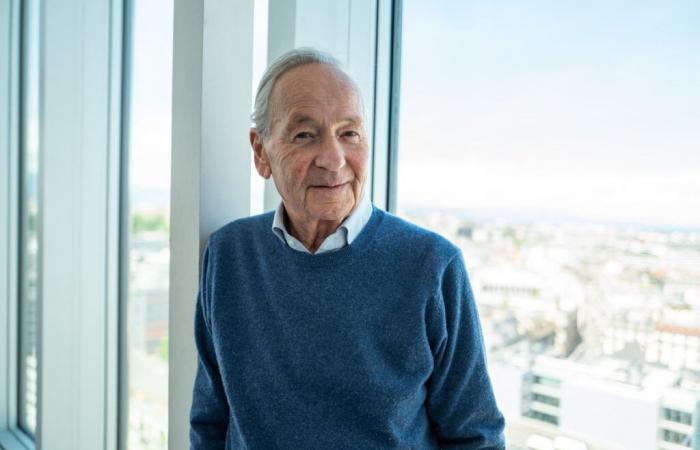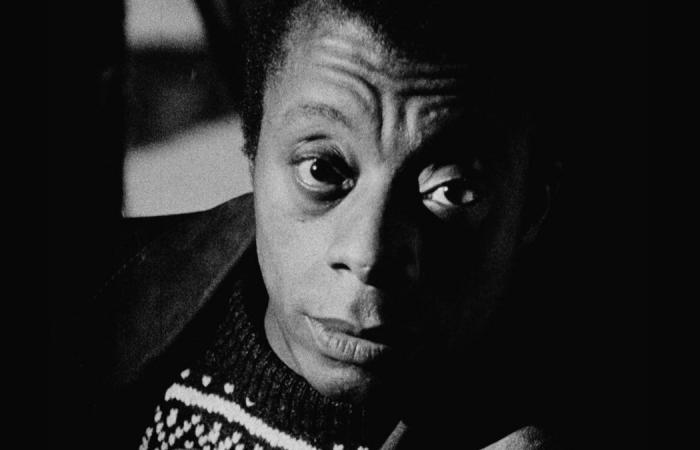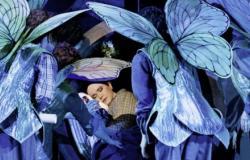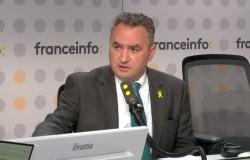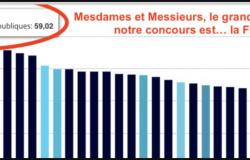Retrospective –
“We have lost freedom for the benefit of commercial will”
From the writer James Baldwin to the painter Francis Bacon, filmmaker Pierre Koralnik has filmed the big names in the art world. The Swiss Cinematheque and the GIFF pay tribute to him.
Published today at 1:00 p.m.
Pierre Koralnik
Subscribe now and enjoy the audio playback feature.
BotTalk
Director and screenwriter Pierre Koralnik filmed the greatest of this world between the 60s and the 90s for cinema and television. At a time when the Swiss Cinematheque is paying tribute to him and the GIFF is showing three of his short films this November 3, he remembers the meetings that marked him with Francis Bacon, James Baldwin, Andrée Putman and so many others. His view of the world today is gloomy and he deplores the democracy which is crumbling while our freedoms are diminishing.
Once is not customary, today you are the subject. What does that change?
It makes me happy, but on a technical level, it’s identical work. What I do with others, I do on myself right now.
What made you want to do this job?
I had finished my matriculation in Geneva and I loved cinema. Two options were available to me: become a film critic or do it myself. I opted for the second option and entered IDHEC, the Institute of Advanced Cinematographic Studies, in Paris, now Fémis.
You have produced anthological portraits for cinema and television, to be rediscovered in a retrospective dedicated to you by the Swiss Cinematheque. How did you choose your subjects?
Most of the time, the impulse came from love at first sight for a character and his work. In other cases, I had to find a compromise that allowed me to produce a portrait while being aware that television did not necessarily know the protagonist.
Do you have any examples?
For the interior designer Andrée Putman, we had to find an agreement on both sides, while the film on Francis Bacon, I did it alone, against everyone and without asking anyone for their opinion.
The painter Francis Bacon filmed by Pierre Koralnik in 1964.
DIDIER BUFFLIER
What was your approach with the British painter?
I had been literally struck by his grimacing popes in an exhibition in Zurich and had got it into my head that I wanted to do his portrait. When I contacted the Marlborough gallery in London who represented him, they laughed in my face. But I didn’t declare myself defeated, I insisted a lot. Not giving up proved fruitful, as I ended up landing a meeting with him.
How did the meeting go?
I started by telling him that we were completely free to do whatever he wanted and that it would take as long as he wanted. He liked this approach which he took as a game.
How much time did you spend with him for this portrait?
An evening and a night. It stopped when he collapsed dead drunk.
Have you stayed in touch?
We met again during an exhibition in Paris. We had discussed the idea of doing something together again, I had made the condition of filming this time in color for a change. The project never happened. In reality, a second part on him would have been totally ineffective and misleading, it was a one-time experience.
What does black and white bring, exactly?
A certain nostalgia, which helps with a past time. Black and white is more raw than color, which softens everything. It’s very difficult to convey a violent or aggressive color in cinema or television.
Then there is of course the American writer James Baldwin, whom you filmed in Switzerland.
Yes, I had done a few reports and a bit of variety, but it was the first film I directed for French-speaking Swiss television. I had read “A Stranger in the Village”, his exceptional essay, which has become very famous, on the relationship between blacks and whites. He wrote it in Switzerland, in Leukerbad. I suggested to those responsible for the show “Temps present” that we go back with him seven years later, to see if anything had changed.
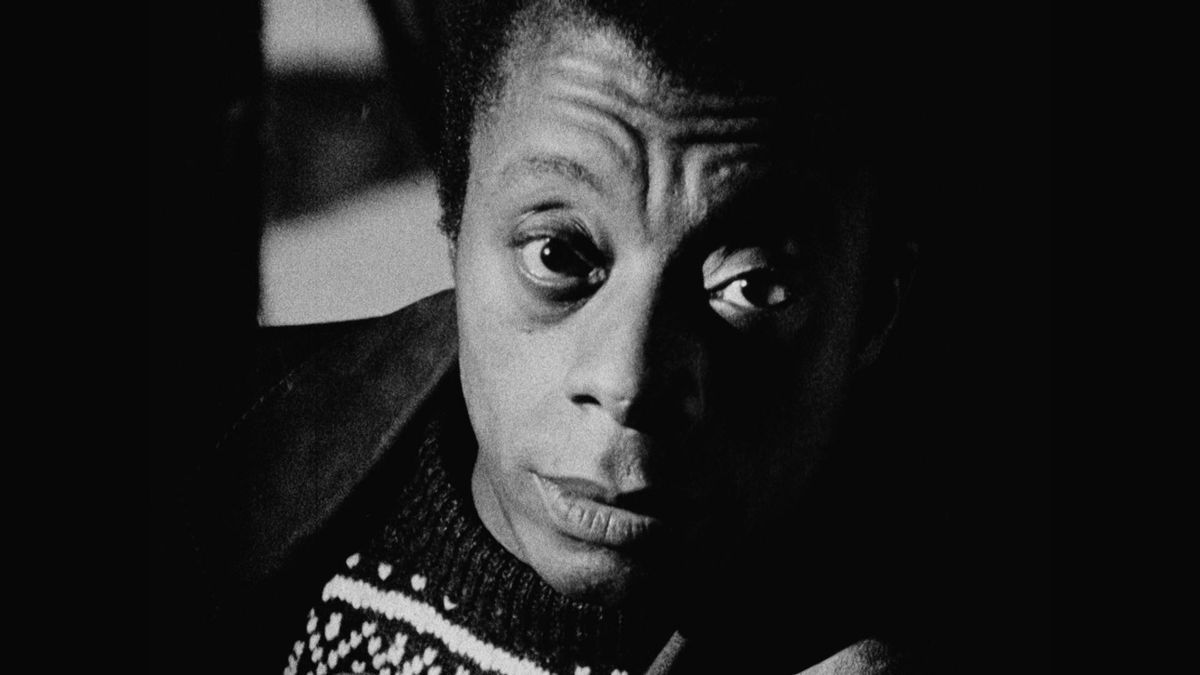
The American James Baldwin lived in a Valais village. It is this experience that Pierre Koralnik recounts in “A Stranger in the Village”, in 1962.
DIDIER BUFFLIER
Had something changed?
Absolutely nothing, people looked at him like he was an alien, children always had the same terror in their eyes because of his skin color. At most, they wanted to touch his hand or his hair. It was as if it was the first time he had come. We were lucky enough to find ourselves in the middle of Lent, we had gone down to the valley to witness this scene, which in my opinion was extraordinary: we see this black man in the middle of a crowd where everyone is motley in black with a small Black man who thanks when we put a coin in the bowl. This is one of the wonderful providential coincidences.
Did you work with him again?
I had asked him to participate in a major report that I was producing for French-speaking television on black America, twenty years after the civil rights movement. He initially agreed, before declining when he found out it was happening in Harlem. He was too afraid of being taken to task. James Baldwin was a controversial figure and his ideas were not necessarily unanimous, even in black circles.
He remains a very current figure, younger generations read him.
My film was on repeat this year as part of an exhibition at the Aargau Museum of Fine Arts. I was able to see how this film still fascinates audiences, both young and old. It was very surprising. He has become a true icon around the world. He would have been 100 years old in 2024.
And then, you filmed the American art collector Peggy Guggenheim, eccentric and totally free too…
All it took was a phone call to obtain her agreement to film at her home in Venice. The film is very lively, in its image. Apart from the testimony of this extraordinary woman, we have collected other precious ones, such as those of Man Ray and Lee Strasberg who speak about her. The film was screened all over the world and I wanted it to be part of the retrospective at the Swiss Cinematheque. Except he’s nowhere to be found!
Hopefully the research will eventually bear fruit… Tell us about Andrée Putman, the interior designer who styled the 80s in black and white. What kind of woman was she?
She was a woman of the world, always elegant, warm and cooperative. She had her character, but was very polite. She knew how to express herself, had a good wit and knew how to answer questions. I did my best to scrape off the worldly veneer and try to see what was underneath.
What meeting had the most impact on you?
The American sculptor of Ukrainian origin Louise Nevelson had a personality full of vitality, interest and curiosity (editor’s note: he directed with the artist who died in 1988 the film “Louise Nevelson, My Life as a Collage”, released in 1980). We got along extremely well from our first meeting. It was very astonishing to see this woman driving and giving orders to mechanics and tractor or crane drivers to lift the tons of heavy metal with which she planned to compose a work.
Who would you dream of painting a portrait of today?
Between desires and finding the financial means, or simply an interested producer, it’s very difficult. I would have loved to make a film about Anselm Kiefer, a great German painter and visual artist who works in France, but I was overtaken by Wim Wenders (editor’s note: the German filmmaker directed “Anselm: The Sound of Time”, released in 2023).
Why Anselm Kiefer?
I love his immense haunting landscapes, which always have a connection with the death camps. It is on the verge of abstraction and realism despite everything.
And a deceased person whose portrait you would have liked to paint?
After Louise Nevelson, I thought there were two other outstanding women left in the United States, the painter Georgia O’Keeffe and the sculptor Louise Bourgeois. It is always an obstacle course to find funds, and cultural programs on television are becoming increasingly rare.
What appealed to you about these two artists in particular?
This ability to create a fantastic and surreal world. Both produced large-scale works. But the work is not everything, it is an alchemy between personality, presence, intelligence, a certain passion.
What is your view on the evolution of humanity since the 70s and 80s?
It’s very piecemeal, but it’s the lack of freedom that comes to mind. In my field, I could try different approaches in vast areas very freely. No one looked at what I did, no one imposed anything on me. This freedom has disappeared. It’s the same in cinema and fiction, freedom is reduced. The demands of producers and studios are disproportionate. They think they know what the public wants, but this often ends in failure, because no one can really predict success with the public. And fortunately.
What do you think is the main reason for the reduction of this freedom?
It’s this commercial desire and this public misconception. Politically, the situation is disastrous. We are witnessing a return of the extreme right in all countries, without exception. The outlook for the future is bleak. Politics is a fiasco in this world, the left has exploded. There are some small sparks left, but the opposition to the right no longer exists, in my opinion. How can a large part of the members of the SVP, the largest party in Switzerland in terms of number and power, support Putin? It’s amazing, and it’s scary.
What do you think of reality TV, which emerged in the early 2000s?
Reality TV? I don’t even know what that means.
These are programs featuring scripted situations with a cast of ordinary people, who apart from their personality and their physique, do not defend a particular talent.
These are interesting experiences… But apart from egos, it remains very limited, right? Reality TV as we practice it, or at least what I have seen, remains extremely fallacious, because it is not reality. Especially if like you say, it’s scripted.
What message do you want to convey to generations after yours?
None. Except to try to survive, because the next times do not look very rosy. It’s going to be difficult. What we once called democracy, the idea of a society that seeks to provide solutions for a better future, is becoming fragmented, or even disappearing completely in some countries. This observation saddens me, because the foundation of existence is based on the acceptance of others to exchange, even if we do not necessarily share the same opinion.
To see: Pierre Koralnik retrospective at the Cinémathèque suisse, Lausanne, until November 27; GIFF is broadcasting 3 short films this Sunday (Maison des arts du Grütli, Geneva, 5:45 p.m.).
Did you find an error? Please report it to us.
0 comments

